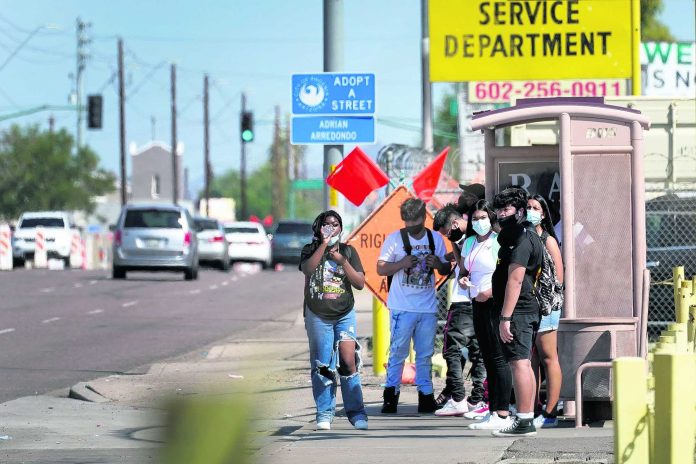
By ANITA SNOW
Associated Press
PHOENIX (AP) — Extreme heat is expensive. That’s the conclusion of a study presented Monday by The Nature Conservancy, which commissioned a look at the costs of rising temperatures in Phoenix.
Working with infrastructure consulting firm AECOM, the nonprofit environmental organization known for its nature preserves and efforts to protect biodiversity this time turned its attention to the country’s hottest large metropolitan area.
“As Phoenix continues to urbanize and its population expands, the benefits of adapting to extreme heat may only increase, as will the consequences of inaction,” the report said. “To implement the ambitious solution scenarios and realize the associated benefits, both the public and private sector will need to play an active role.”
David Hondula, a climate scientist formerly with Arizona State University who now heads Phoenix’s new heat response and mitigation office, said the report will be useful for cities like his in getting funding for measures to help cool down neighborhoods. He served on the study’s advisory committee.
Phoenix was always scorching, but climate change has made it even hotter, with temperatures in early September still climbing to 111 degrees (43.8 Celsius). Temperatures reached as high as 118 degrees (48 Celsius) over the summer. The city is the nation’s fifth largest, with 1.6 million people.
The people most vulnerable to the heat are often in poor and racially diverse communities where many households lack the means to cope with heat waves that are becoming more frequent, widespread and severe. Phoenix’s Maricopa County recorded 323 heat related deaths in 2020,
The Nature Conservancy’s study looked at the costs that can be caused by steadily rising temperatures to human health, labor productivity, electricity and roadways.
Extreme heat already costs people in metro Phoenix $7.3 million every year in emergency room visits and hospitalizations due to heat-related illnesses, according to the study. Maintaining roadways in the metro area costs transportation agencies over $100 million annually as streets and highways buckle, rut and crack from high temperatures.
The study concluded planting enough trees to provide canopy for a quarter of the desert city and covering all of the area’s buildings with “cool roofs” made of materials that don’t absorb heat could help the city save billions of dollars over the next three decades.
It said installing cool roofs on just a third of the structures in the Phoenix metro area could help save as much as $280 million annually in avoidable losses from decreased labor productivity, increased energy needs and heat-related illnesses and deaths.



















